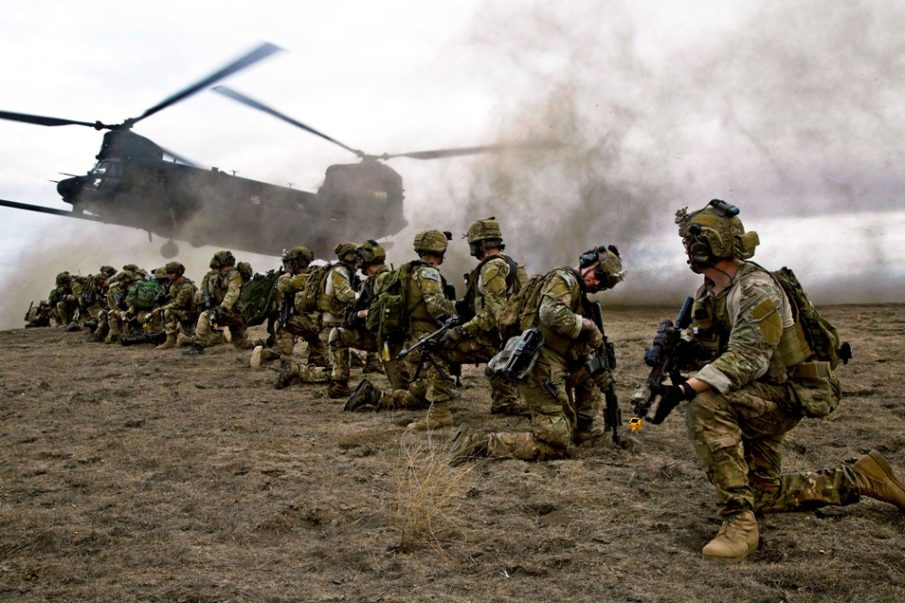The Evolution of the 75th Ranger Regiment, Post-9/11 (Part 1)
The 75th Ranger Regiment was initially established during the Post-Vietnam War years, when the Army was seriously hurting. Rangers were to serve as role models, and set the example as Airborne Infantrymen who religiously attained and surpassed established standards. Before the War on Terror began, Rangers primarily focused on basic Infantry tasks such as ambushes, raids, and patrolling skills, with the additional responsibility of conducting airfield seizure missions.
There was the Regimental Standard Operating Procedures, or RSOP, a Blue Book that when combined with the Ranger Creed dictated pretty much every action a Ranger was to take or prohibited from taking. Load Carrying Equipment (LCE) had a tie down SOP, how jungle boots were worn had an SOP, how dog tags were taped together had an SOP. Discipline and adherence to the standards was paramount and most of the year Rangers would be training on post with occasional off-site training at the National Training Center (NTC) or Joint Readiness Exercise (JRX).
At this time the Regiment was a highly disciplined Airborne Light Infantry unit that trained for immediate short-notice world wide deployment. Like in Panama, Grenada, and to a lesser extent, Somalia, there was an expectation that Rangers would jump into future conflicts, conduct their missions, and catch the first flight back to the US. Training and SOP’s had grown out of these past conflicts, particularly Vietnam, and reflected the projected nature of future deployments.
Rangers during the Clinton years were not nearly as well funded as they should have been. They also had to fill the dual role of being the Army’s premier combat Infantry unit as well as setting a sterling example of discipline and professionalism for the rest of the Army. This meant that shinning boots and pressing uniforms were often as important as training for combat. Attempting to wear these two hats at once is an issue that the Regiment has always had to grapple with.
The 75th always has, and probably always will, be a high visibility unit.
Then 9/11 happened.
I arrived at 3/75 just as the battalion was coming back home, after jumping into Iraq during the opening salvo of OIF I. Of course it was disappointing to miss out on the invasion but I had some second thoughts when I saw dudes limping around on crutches with two broken ankles. They told me that they had been so loaded down with equipment during the combat jump that the static line hung at waist height.
This was 2003 and we were still being issued LCE’s which had to have pouches and canteens tied down with 550 chord (according to SOP) with the ends burned and melted to keep knots in place. However, no one used the LCE and it was being phased out. The MOLLE rucksack and riflemen’s kit was being issued. The rucksack, I shit you not, came with a VHS instructional video on how to put it all together. It also had a plastic frame which was laughable given how hard Rangers are on their equipment. The ruck sat at the bottom of everyone’s locker but the combat vest that it came with was used in substitution of the older LCE.
This was a strange time for Ranger battalion. Things were changing and not everyone was pleased. The standards were still being enforced, but these Rangers had been on real life combat deployments to Afghanistan and Iraq. Judging a man’s discipline by inspecting his haircut or how well his dog tags were taped together just didn’t seem as relevant anymore. When an NCO yelled that doing this-or-that is against the RSOP and will get you killed in combat, it just didn’t ring true to young Rangers who now wore CIB’s on their chest. This isn’t a positive attitude to have of course, but this clash between old school Rangers and new school Rangers was something that continued for years.
As a cherry Private, I got the impression that the Regiment was having something of an identity crisis. We were not counter-terrorist commandos but we were also not toy soldiers who spit polish boots for the parade ground. We were training for combat, but the training was not always reflecting what Rangers were being confronted with on the battlefield. Sometimes it seemed like maintaining a high and tight and a spotlessly clean rifle was the main focus of your day in Ranger battalion.
All of this would soon change. Future installments in this series will describe how the weapons, equipment, culture, selection process, and mission of the 75th Ranger Regiment evolved, particularly in the Post-9/11 years.
Already have an account? Sign In
Two ways to continue to read this article.
Subscribe
$1.99
every 4 weeks
- Unlimited access to all articles
- Support independent journalism
- Ad-free reading experience
Subscribe Now
Recurring Monthly. Cancel Anytime.
Image courtesy of US Army









